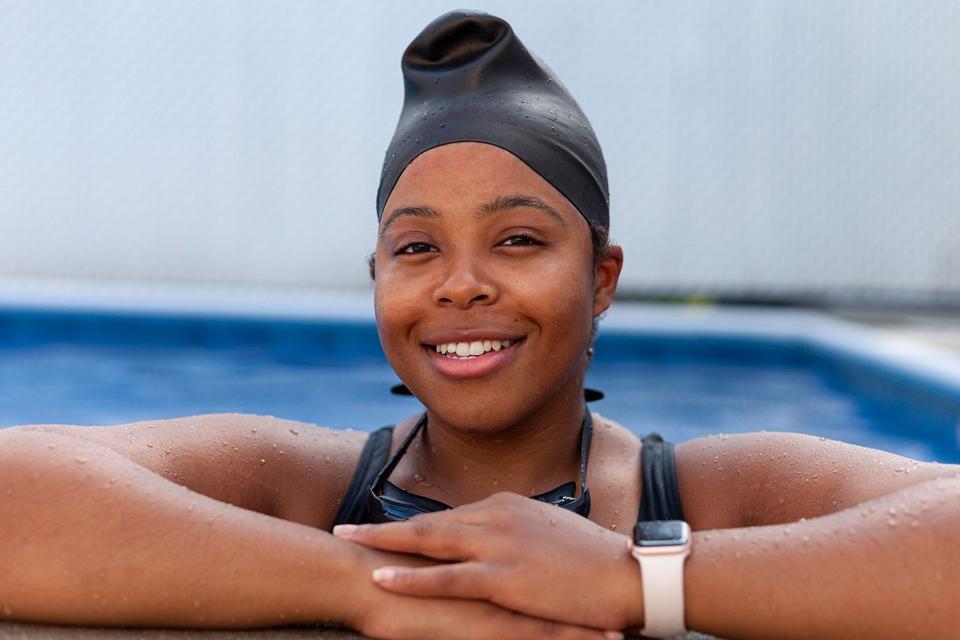In the wake of devastating floods that left at least eight dead and hundreds displaced across Southeast Texas in June, the conversation around climate resilience and water safety is gaining urgency—and long-overdue nuance.
While the U.S. has seen decades of progress in drowning prevention, those gains have sharply reversed in recent years. Drowning deaths are now on the rise again, and Black communities are disproportionately at risk. According to the CDC, Black children ages 10–14 drown at rates 7.6 times higher than white children in swimming pools alone.
Yet amid this crisis, a group of millennial-led organizations is filling the vacuum left by slashed federal programs and closed community pools.
“This is about more than swimming,” said Dr. Miriam Lynch, Executive Director of Diversity in Aquatics (DIA). “We’re rebuilding relationships with water that were fractured by trauma, segregation, and systemic neglect. That takes more than just lessons—it takes healing.”
Led by Dr. Lynch, a swim coach and educator who lost two loved ones to drowning, Diversity in Aquatics is one of the very few Black-ran national nonprofits addressing the drowning disparity at scale. Its work—centered around education, trauma-informed healing, and workforce development—has reached over 2,000 students across the country through HBCU programs, instructor academies, and community events.
This summer, DIA made its international debut in Grenada, offering water safety training to over 150 children in a single day as part of its Caribbean expansion. The initiative, held on World Oceans Day, featured swim instruction, CPR certification, snorkeling, and trauma-informed breathwork sessions led by BIPOC wellness leaders.
“We’re connecting cultural legacy and practical skills,” Lynch explained. “Many of these communities are coastal, yet lack the resources to teach water safety. That contradiction is what we’re working to solve.”
When Pools Close, Communities Drown
DIA’s expansion comes at a time of contraction for public funding. The CDC’s Drowning Prevention branch was quietly disbanded under the Trump administration, eliminating key federal research and grant infrastructure. Meanwhile, local pools—especially those in low-income and historically Black neighborhoods—are increasingly underfunded or permanently closed.
“Swimming is often the first thing cut when budgets shrink,” said Thaddeus Gamory, Director of Community Engagement at DIA. “We’ve seen pools turned into parking lots in counties with the highest drowning rates. That’s not just a loss of recreation—it’s a public health failure.”
One such example: Broward College in Florida, located in one of the nation’s most at-risk counties for drowning, permanently closed its pool pre-COVID despite its strong swim legacy.
A Pipeline for Prevention…and Careers
Paulana Lamonier, founder of the New York-based swim school Black People Will Swim, is also fighting the tide—this time as a private business owner. The 33-year-old has taught more than 3,500 people how to swim, many of them children under five.
“Drowning is the leading cause of death for kids under four,” Lamonier said. “We’re not just teaching survival. We’re creating access, joy, and job pipelines.”
Her newest initiative, Swim to Serve, trains local teens to become lifeguards and instructors, solving a persistent staffing shortage while creating employment opportunities for young people of color.
Still, the barriers are steep. Rising pool rental costs, declining enrollment, and dwindling grant support have made survival increasingly difficult.
“To be honest, swimming is not where you go if you want to get rich,” Lamonier said. “But it’s deeply rewarding. We’re saving lives every day.”
What Millennials Are Doing Differently
While previous generations of nonprofits often centered charity, millennial-led organizations like DIA and Black People Will Swim are embracing entrepreneurial strategies, data-driven models, and trauma-informed education. They’re also collaborating across sectors—from Red Cross and Speedo to Spelman College and USA Swimming.
“We’ve had to become innovative because we don’t have the luxury of deep funding,” said Lynch. “We barter for gear, ask for in-kind donations, and rely heavily on volunteer networks. But we’re building something sustainable—and rooted in culture.”
Their work also speaks to a broader millennial ethos: blending purpose with impact. Lamonier puts it plainly: “If I’m not making money, it’s a hobby. But if I’m not making a difference, it’s not worth it.”
A Movement Gaining Momentum
This isn’t just about swimming—it’s about shifting the narrative. DIA’s trauma-informed curriculum includes workshops on the historical links between water and Black trauma, including slavery and segregation. That curriculum isn’t theoretical; it’s designed to heal.
“The most powerful moment in Grenada was seeing kids feel safe in water—some for the first time ever,” said Lynch. “That’s what we’re doing this for.”
As climate change brings more flooding and rising sea levels, the stakes are only getting higher. But these millennial leaders aren’t backing down.
“The tides are turning,” Lynch said. “Through education, community, and culturally rooted care, we’re making sure water becomes a bridge—not a barrier.”

